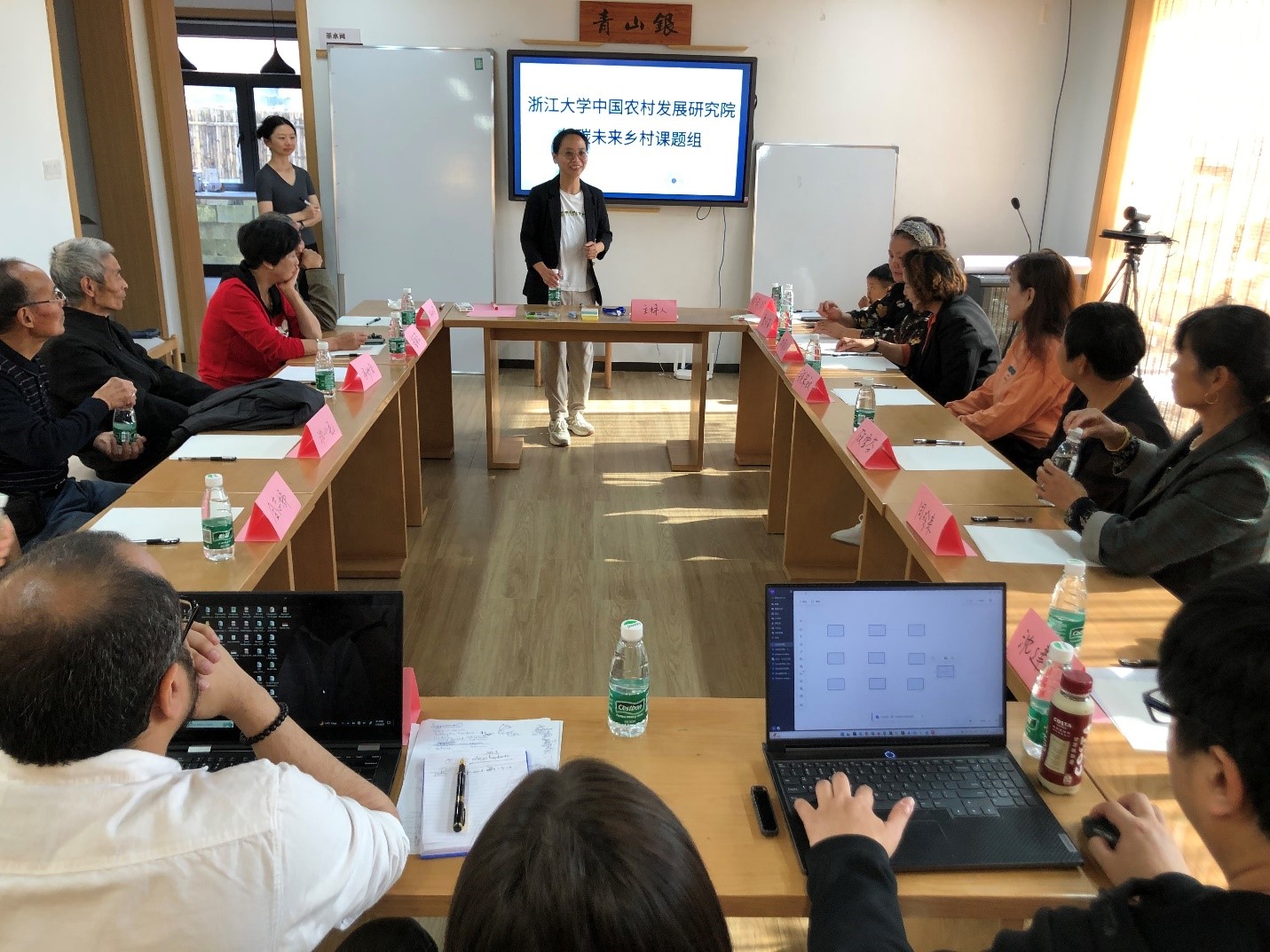
By Praveen Kumar (Boston College), Xinxin Wang (Zhejiang University of Finance and Economics), Kevin Chen (International Food Policy Research Institute and Zhejiang University).
From November 3rd through 9th, 2023, mental modeling exercises, led by scholars and researchers from the Zhejiang University and Zhejiang University of Finance and Economics,, were conducted by engaging with stakeholders of the Qingshan Village of Zhejiang province in China as part of a collaborative project on the Living Labs for People (LL4P) work package in the CGIAR Research Initiative on “Low-Emission Food Systems” (Mitigate+). The objective of the study was to explore potential barriers and enablers helping the development of a low-emission food system in Qingshan Village. The Qingshan Village is a rural community developing a green economy by integrating sustainable farming, ecosystem travel, traditional culture protection, environment protection, and local agri-food value chain. However, based on the preliminary field visits, it was concluded that key stakeholders have incoherent perceptions, particularly on what it means to have a low-emission food system. A clear understanding of the determinants contributing to a low-emission food system among key stakeholders is central to the community’s economic development and the evolution of Qingshan as a “Future Village.” Rural communities with similar objectives to realize low-emission food systems can leverage the conceptual model developed in this research. The specific objectives guiding the study were to: 1) Unpack key indicators of a low-emission food system in the Qingshan village, 2) Explore factors impacting the development of a low-emission food system, and 3) Model the dynamics of low-emission food systems based on the mental models of key stakeholders.

To systematically unpack the mental models of stakeholders on low-emission food systems in the village, four sessions of participatory Fuzzy Cognitive Mapping (FCM) and one session of participatory netmapping were deployed. FCM and netmapping are approaches based on systems mapping that find their roots in network theory and participatory approaches and unpack social, economic, and cultural factors driving the dynamic behavior of a system. Each FCM session was conducted with 12-15 stakeholders. To maintain a diversity of voices, it was decided to conduct the sessions with four different groups of stakeholders: 1) original residents of the village, 2) relatively newer residents of the village, 3) women residents, and 4) government officials representatives of public owned enterprises and representatives of social organizations. The fourth group also conducted a netmapping session with the study team. The team used purposive sampling to invite stakeholders to participate in the four FCM sessions and one net-mapping session. Diversity was ensured in each session, particularly across gender, occupation, and organizational representation.
The mental modeling session using FCM helped to unpack the stakeholders’ mental models through systems mapping. The process itself was divided into three phases: 1) Participatory group model building using FCM with stakeholders in the field, 2) Use of the qualitative data and models to create cognitive maps, and 3) Translation of the qualitative maps into semi-quantitative maps for examining structural relationships between model components. A sample of a few questions that the study team used to conduct FCM are: 1) What do you understand about the term low-emission food systems? 2) Are there signs/indicators that you can talk about a village when it realizes low-emission food systems? 3) Based on the previous question, could you help us build the wall (work on the flip charts), providing key indicators characterizing low-emission food systems? 4) Can you think of social and biophysical factors that impact one or more of these indicators? 5) Do you think a market-based beneficiary payment scheme (BPS) impacts the low-carbon agri-food value chain development indicators? 6) Are low-carbon practices economically viable in rural villages? 7) How can private and non-profit organizations expand sustainable food production?

A vital component of the systems mapping was to undertake a qualitative netmapping exercise. Based on preliminary field visits as part of the scoping review exercise and existing literature review, the study team had internally developed a stakeholder netmap. The study team facilitated one net-mapping session with 12-15 stakeholders composed of local government officials and private players to validate the netmap and undertake revisions. Validation of the netmap was part of the larger FCM session with these stakeholders to specifically understand the structure and composition of multiple stakeholders’ associations and, thereby, their evolution over time.
The analyses of the mental modeling exercise are currently underway. A sample of a few key factors (not exclusive) that were discussed during the modeling sessions includes 1) tourism, 2) use of fertilizers and pesticides, 3) public transport, 4) bamboo, 5) beneficiary payment scheme, 6) financial support from the government and local social organizations. The study team expects to unpack critical factors acting as barriers and enablers to the low-emission food systems in the Qingshan Village. These factors could be instrumental in scaling up the best practices in this village to proximal habitations. This is particularly crucial, as the next phase of M+ has a relatively greater emphasis on scaling low-emission food systems.



